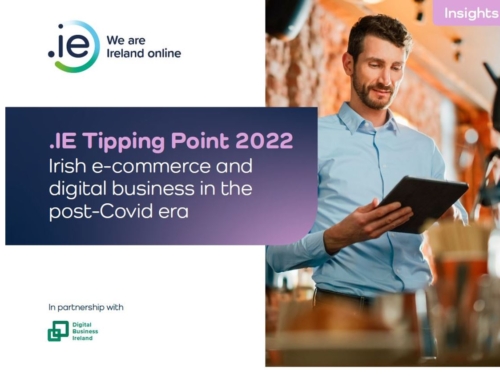The Complete Guide to E-commerce Website Design 2025
Introduction
In the evolving landscape of eCommerce, a well-designed website is a key driver of business success.
Whether you’re launching your first store or upgrading an existing one, mastering eCommerce website design in 2025 can make or break your brand’s online presence.
This comprehensive guide, created by the eCommerce experts at thedesignpool.ie, dives deep into the latest best practices for eCommerce web design, focusing on SEO and E-A-T (Expertise, Authority, Trustworthiness) principles that will help your business stand out and rank well on Google.

Step 1: Understand Your Audience and Define Objectives
The first step towards designing an effective eCommerce website strategy in 2025 is understanding your audience.
- Who are your customers?
- What are their needs and preferences?
- Using tools like Google Analytics and Microsoft Clarity to analyze user behavior and demographics.
This understanding should influence the design, features, and content on your website, ensuring you meet user expectations.
Step 2 : Setting Clear Objectives
- Increase sales by improving user experience.
- Grow your email subscriber list for remarketing purposes.
- Enhance brand recognition by showcasing your expertise.
The objectives you define will guide your design decisions, making your 2025 eCommerce website more focused and results driven.
Step 3: Choosing the Right Platform
Selecting a content management system (CMS) is a foundational decision. At thedesignpool.ie, we recommend using WordPress with WooCommerce for its versatility, scalability, and SEO compatibility.
Step 4: Design for User Experience (UX)
User experience is key to keeping potential customers on your website longer and encouraging conversions.
Your eCommerce website should offer easy navigation, a clean interface, and intuitive product discovery.
Key UX Elements
- Fast Loading Speed: Aim for loading times of 2-3 seconds. Use tools like Google PageSpeed Insights to identify slow elements and optimize them.
- Mobile-First Design: With a majority of users browsing via mobile, ensure your design is responsive and provides a seamless mobile experience.
- Clear Navigation: Use a top-level menu that helps users easily find categories. Tools like Microsoft Clarity can help visualize user paths and improve navigation flow.
- Search Functionality: Add a robust search feature with predictive text to make finding products easier.
Step 5: Leverage the Power of E-A-T (Expertise, Authority, Trustworthiness)

E-A-T principles play a huge role in how well your eCommerce website ranks and delivers a great experience . Here’s how to integrate E-A-T into your 2025 eCommerce web design strategy:
1. Showcase Expertise
- Include blog posts and guides relevant to your niche, written by industry experts. For example, if you’re selling skincare products, write articles on “The Best Skincare Routine for Dry Skin” or How to Choose the Right Moisturizer.”
- Use a content hub to organize related content, which helps establish topical authority and improves SEO. In other words get all your Skincare products with their keywords in one section of your website and link internally between each of the pieces of content
2. Build Authority
- Link Building: Obtain backlinks from reputable sites in your industry. Reach out to niche blogs and collaborate on guest posts.
- Testimonials and Case Studies: Highlight your past successes. Customer testimonials and detailed case studies act as social proof and signal authority.
3. Establish Trust
- Trust Badges and Certifications: Display SSL certificates, payment security badges, and industry awards prominently on your site. Also case studies from clients you have worked with
- Detailed Contact Information : Include an address, phone number, and contact form. Clear contact details shows transparency and makes your brand more trustworthy.
Tell visitors about your back story to further build trust. People are always keen to know about how your business came into to being and what skills, experiences and resources you have to help them.
The backstory of thedesignpool.ie and the people who work there is laid out clearly for all visitors to see.

6. 2025 Content and SEO Strategy
A well-designed 2025 eCommerce website needs to be discoverable. You want as many of your potential customers to find you as possible
Effective SEO starts with a strong content strategy.
1. Keyword Research
- Use tools like Google Keyword Planner and Ahrefs to identify keywords relevant to your business.
- Focus on phrases and keywords to build a topical map that enhances your SEO.
2. On-Page SEO
- Optimized Meta Titles and Descriptions: Include keywords naturally in titles and descriptions. Keep them concise, compelling, and focused on user intent.
- Use Schema Markup: Apply schema markup to help search engines understand your content better and improve your chances of appearing in rich snippets.
- Rich snippets are extra information that users can see on the search engine results pages that relate to a specific product.
- Below you see one for books.
- If you are an eCommerce company you will see how much more you can get on to the search page if using rich snippets. The reviews, prices and the book can be seen even before anyone enters the website.


5. Content Optimization
- Internal Linking: Guide users to related products and articles. This not only keeps users on your site longer but also helps distribute link equity across your pages.
- Product Descriptions: Write unique, engaging product descriptions. Avoid using manufacturer-provided descriptions, as they’re often duplicated across the web.
6 Visual Design and Branding
Your website should reflect your brand’s identity. Branding helps build recognition and trust.
1. Consistent Branding
- Colors and Fonts: Choose colors and fonts that align with your brand identity. Consistency across all pages creates a professional image and fosters recognition.
- Logo Placement: Ensure your logo is visible on every page, ideally in the top-left corner, linking back to the homepage.
2. Visual Content
- Product Images: Use high-quality images from multiple angles. Tools like Canva can help with branding graphics, while Piktochart is great for creating infographics about data your audience may find interesting.
- Videos: Include product videos. A 360-degree view or a quick demo can increase conversion rates significantly. Use Lumen5 or Descript for video creation. Users like to have an insight into your business and who you are so they can trust you when it comes to purchasing a product.
7. Optimizing Conversion Rates in 2025
To make your 2025 e-commerce website effective, conversion rate optimization (CRO) must be a focus.
1. Simplify the Checkout Process
- Minimize the steps needed for customers to complete their purchase. Offer a guest checkout option to reduce friction. Remove the need to have users to have to sign into your website
- Show a progress indicator during checkout to keep users informed about their progress and how close they are to purchasing their product.
2. Add CTAs That Stand Out
- Use contrasting colors for call-to-action buttons to ensure they catch the eye. Phrases like “Add to Cart” or “Buy Now” should be clear and actionable.
3. Cart Abandonment Strategy
- Send cart abandonment emails to remind users of items they left in their cart. Offering a small discount or free shipping can incentivize them to complete their purchase. We have set this up for our clients and have noticed many come back and purchase.
The average cart abandonment rate is 69.99%, according to Baymard Institute. This is an average of 48 shopping cart abandonment studies, which range from 56% to 81%.
8 Personalization
Personalization improves the shopping experience, increasing the likelihood of conversions.
1. Product Recommendations
- Use AI-driven recommendation engines to suggest products based on user behavior and previous purchases. The best example of this is the way once you’ve purchased a product on Amazon, you are provided with additional recommendations. You can build this functionality into your website too.
2. Personalized Content
- Create personalized content, such as blog posts or landing pages, for returning users. Tools like Microsoft Clarity can help track user behavior and inform content personalization.
3. Dynamic Content for Email
- Segment your email list and use personalized subject lines. Use MailerLite or Mailchimp for email marketing campaigns that feel personal. For example around August you may want to building awareness with your list regarding your Black Friday promotion
9. Testing and Iterating Design Elements in 2025
Your website isn’t a set-it-and-forget-it project. Continuous testing helps identify what’s working and what isn’t.
1. A/B Testing.
- Test different versions of key pages, such as the homepage, product pages, and checkout. Tools like Google Optimize can help determine which versions perform better.
2. Heatmaps and Session Recordings
- Use Microsoft Clarity to understand how users interact with your pages. Heatmaps show which areas are drawing attention, while session recordings can highlight points of friction.
10. Post-Launch Optimization and Maintenance
Launching your website is just the beginning. Maintaining and optimizing it will ensure continued success.
1. Regular Updates
- Keep your CMS, themes, and plugins updated. Outdated software is vulnerable to security threats and can slow down your site.
2. SEO Content Updates
- Update your content regularly to keep it relevant. Refresh old blog posts with new information to stay current and keep your audience engaged.
3. Monitor Performance Metrics
- Use Google Analytics and Search Console to monitor key performance indicators (KPIs) like bounce rate, session duration, and conversion rate.
Whatever is not working , then change.
4. Customer Feedback
- Regularly collect feedback to understand customer pain points. Implement changes based on this feedback to improve the user experience.
Conclusion
eCommerce website design in 2025 is about more than just aesthetics. It’s about creating an experience that feels personal, reliable, and easy to navigate.
By adhering to best practice SEO, applying E-A-T principles, and focusing on user experience, your 2025 e-commerce website can stand out in a crowded digital market.
At thedesignpool.ie we are an eCommerce web design company who take pride in helping businesses like yours establish a successful online presence.
Get in touch today to see how we can elevate your 2025 e-commerce website design and drive tangible results.
Please check here to find reviews of our service.
Call us on 01 230 3645 or for a free quote , click here.




